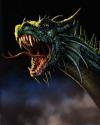| Online: | |
| Visits: | |
| Stories: |

| Story Views | |
| Now: | |
| Last Hour: | |
| Last 24 Hours: | |
| Total: | |
Just How Serious Is Ebola? Look At It’s History – The True Story of Ebola In Reston, Virginia

Freedom Outpost
Ebola Reston - In October 1989, the community of Reston, Virginia went about their daily lives not realizing that a serious crisis was developing right in their back yards that would not be entirely resolved until March 1990. It was a serious calamity that could have wiped out the entire population. This dire emergency was described twenty years ago by Richard Preston in his non-fiction book, “The Hot Zone.” The “hot zone” refers to an “area that contains lethal, infectious organisms” also dubbed “hot agent,” an “extremely lethal virus, potentially airborne.” (Richard Preston, The Hot Zone, Random House, New York, 1994, p. 296)
The people in the book are real, two victims’ names have been changed, and the narrative and dialog were masterfully reconstructed from interviews and memories of those who participated in the crises.
Hazelton Research Products, a division of Corning, Inc. was importing and selling lab animals. On October 4, 1989, the monkey house called Reston Primate Quarantine Unit located not far from Leesburg Pike, received a shipment of one hundred crab-eating monkeys (a type of macaque) from the Philippines, caught on the island of Mindanao. Two of the monkeys were dead in their shipping crates. By first of November, 29 of the monkey were dead, most of them in Room F. The heating and air system had failed so it was assumed the deaths had occurred from ambient conditions. Each night more macaques died. By November 16, a tentative diagnosis was given “simian hemorrhagic fever.”
Thomas Geisbert, an intern at the Institute discovered under his electron microscope the dreaded Ebola virus. Dr. Jahrling tested the virus cultures from the macaques against three known blood serums:
- Musoke (test for Marburg virus)
- Boniface (test for Ebola Sudan)
- Mayinga (test for Ebola Zaire)
The virus cultures glowed brightly against the Mayinga blood serum indicating that the monkeys in the Reston house died of Ebola Zaire strain, the deadliest of all filoviruses (Ebola).
The Institute is short for the United States Army Medical Research Institute of Infectious Diseases (USAMRIID) located at Fort Detrick, Maryland. Its “mission is medical defense” with specialty in “drugs, vaccines, and biocontainment.” The Institute’s Army and civilian personnel were instrumental in the containment of the Ebola Reston virus in Reston, Virginia monkey holding facility.
Reposted with permission



